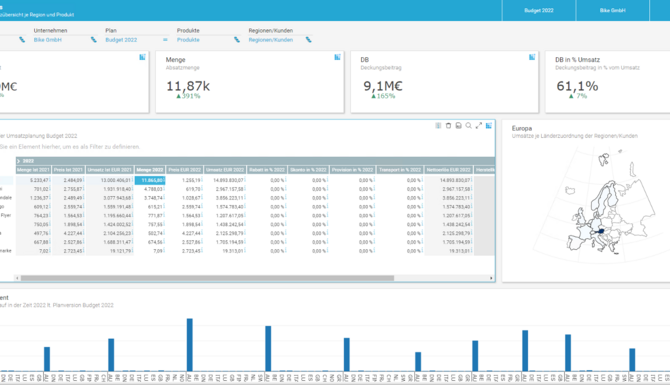Typical problems that controllers often face in financial planning are inaccurate forecasts, unexpected expenses, volatile markets and the integration of different data sources for a consolidated view. To solve these problems and avoid stress and frustration, the use of professional controlling software or financial planning software is recommended.
A closer look at the problems that frequently occur in financial planning:
Challenges in financial planning - The most common problems
- Inaccurate or Incomplete Data
One of the biggest challenges in financial planning is the use of inaccurate or incomplete data. If financial data is not properly recorded or updated in time, it can lead to incorrect assumptions and distorted planning results, making informed decision-making difficult.
- Lack of Transparency and Overview
In many companies, financial data is scattered across multiple systems and departments. This results in a fragmented view of the financial situation, making it hard to make well-informed decisions without a centralized, unified overview.
- High Complexity and Time Consumption
Financial planning—especially in large companies but also in SMEs—can be highly complex and time-consuming. Manually creating and adjusting budgets, forecasts, and scenarios slows down the process and places a heavy burden on controlling teams.
- Difficulties in Scenario Analysis
In a dynamic business environment, companies need to regularly model different scenarios and assumptions. Manual calculations and adjustments are prone to errors and can significantly delay the planning process.
- Lack of Flexibility
Rigid financial plans without sufficient flexibility make it difficult to respond quickly to market changes or unforeseen events. Without the ability to adapt, strategic adjustments become challenging.
- Poor Cross-Department Collaboration
Financial planning is a cross-functional process that requires input from sales, production, and controlling. Lack of communication and poor coordination lead to isolated planning efforts and a distorted overall picture.
- Underestimating Risks
Market changes, regulatory shifts, and unexpected events are often not sufficiently integrated into financial planning. This increases the risk of financial bottlenecks and strategic missteps.
- Lack of Automation
In many companies, financial planning processes are still based on manual inputs and Excel spreadsheets. This makes the process error-prone, time-consuming, and prevents fast, efficient, and accurate execution.
- Neglecting Medium- and Long-Term Goals
Short-term financial targets often receive more attention than medium- and long-term strategic objectives. This can hinder sustainable business growth and cause companies to miss valuable investment opportunities.
- Complex Regulatory Requirements
Financial planners must comply with a wide range of legal and tax regulations. Failure to adequately consider these requirements can lead to compliance issues and additional costs.
All these challenges can complicate financial planning in an SME or large company and lead to poor results. However, efficient, modern controlling software such as CoPlanner can solve many of these problems and make financial planning much easier!



